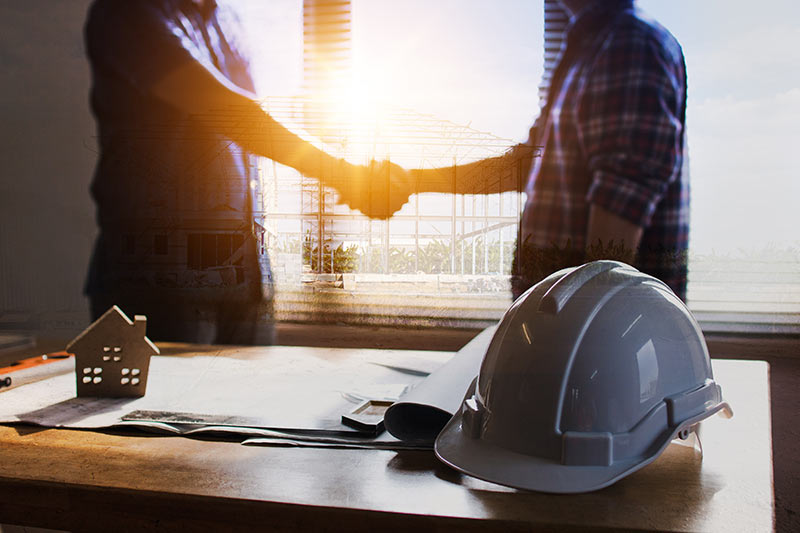There has been a large housing shortage currently in the United States which creates demand in the market for builders to continue constructing new homes throughout 2021
In March, as demand among home buyers remains extraordinarily strong, home builders increased the rate of new-home construction. Demand is high for newly built homes as buyers face a record-low number of choices and rising prices for existing homes. Redfin predicted that more homes will be built in 2021 than in any year since 2006.
Winter weather and higher than normal materials costs had caused a slowdown in February, but since then new-home construction has surged at a time when the housing market desperately needs more inventory to meet the growing demand from first-time buyers.
In 2021, the landscape for homebuilders will be even more favorable. Rising prices for existing homes will increasingly drive more buyers to consider a new one. And because homebuyers are now more eager to buy in suburban and rural areas where land is cheaper than in the cities, there will be more areas where homes can be built profitably.

Home builders ramped up the rate of starting construction on new homes by 19% when compared to the previous months figures according to the the U.S. Census Bureau, breaking ground on 1.74 million properties in March of this year. Compared with the same period last year, new home construction increased by a significant 37%.
Permit requests for new home construction in the United States also went up in March, though by a lesser amount. New home permits were up 2.7% from February and 30% from a year ago.
Where did new home construction increase?
Since the pandemic began, construction of new homes has spiked. New home building projects increased for both single-family homes and multifamily properties, increasing 15% and 30% respectively across the two categories. The Midwest saw the largest gains in new-home construction, where housing starts more than doubled on a monthly basis. While home-building activity slowed in western states, the northeast and the south also saw faster rates of new construction home building.
Permits for single-family homes increased nearly 5%, while authorizations for multifamily development dropped by almost 4%.
Building permits were more of a mixed-bag. At the national level over the past month, permits for single-family homes increased nearly 5%, while authorizations for multifamily development dropped by almost 4%. Notably, permits for duplexes, triplexes and quadplexes surged 25.5%, suggesting that cities across the country are looking to encourage higher density neighborhoods to meet the excess demand for housing.
Regionally, building permits fell in the Northeast, rose in the Midwest and South, but stayed the same flat in the West.
What will the trend for new home construction be for the rest of the year?
The pandemic encouraged many families to want to move to take the leap to move into larger homes. Millennials make up approximately 38% of homebuyers. Millennials have reached the point in life where homeownership becomes attractive — they’re settling down and having kids, prompting a need for more space and stability. Many are looking for either their first or second home.
All of this creates strong demand for homes and with so many motivated buyers in the market, you end up with multiple people bidding on the same house, which triggers price increases.
Builders are going to be really busy in 2021.
There’s a renewed interest in housing after people have been crammed into a small apartment or house during Covid lockdowns. People want space now, more than ever. New construction on single-family homes could exceed 1 million in 2021. It’s important for this momentum to continue throughout the year to ensure there are homes to meet the extreme demand from buyers since an increase in new homes plays a strong role in today’s housing market.
Although builders have plenty of reason to keep constructing new homes at a steady pace, affordability has become a growing challenge for buyers. Home prices have been rising because of the cost of lumber and higher mortgage rates. If they cannot find a property they like and can afford, there’s a risk that some people may exit the housing market until they’ve got more cash.
Home Builders say they are most concerned with inconsistent access to building materials. The pandemic continues to disrupt the manufacturing and distribution of building materials. Supply chain disruptions result in higher costs for materials which then leads to inflating home prices — and construction delays. The late arrival of things like cabinets and appliances can delay use and occupancy permits required for homeowners to move in.
Supply costs also are up, thanks in part to the lumber tariffs. If the incoming Biden administration works out a new deal with Canada, builders might start to see some easing on lumber costs. As it stands, the higher cost of lumber are being passed on to consumers. While new construction is a critical component in rebalancing the current dynamic shift in the market, lack of affordability will continue to be a challenge for the remainder of 2021.
The efforts to stabilize material costs seem to be helping. In April the cost was around $350 per thousand boards. Then it peaked in September to $955, now it’s at around $600.
Though costs and supply-chain disruptions will slow the growth of residential construction this year, strong buyer demand, partly due to low mortgage rates, is keeping builder confidence high.
Read more about New Home Construction Rebounding During Housing Shortage here

